Tom Kepler's Blog, page 40
September 19, 2011
Book Review: Orange Petals in a Storm, by Niamh Clune
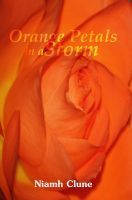 All readers walk the hero's journey--a quest of discovery--and I found this especially true when reading Niamh Clune's
Orange Petals in a Storm
.
All readers walk the hero's journey--a quest of discovery--and I found this especially true when reading Niamh Clune's
Orange Petals in a Storm
.The action begins dramatically--an eleven-year-old girl running away in a rainstorm, escaping the slow death of a cold and unforgiving home to be received by the cold, unforgiving torrent of a winter storm.
A symbolic sort of thing, I thought, and well done. The book then moves away from the immediate storm and into the minds of the main characters, a definite change of pace which gave me pause. As I continued, I realized that much of the novel was going to be focused on the inside workings of the characters' minds rather than limiting the focus to action.
Author Niamh Clune is "a writer, teacher, spiritual psychologist, award-winning social entrepreneur, environmental campaigner and award-winning writer of songs." Orange Petals in a Storm reads in places much like The Celestine Prophecy and in other parts of the novel reads somewhat like the medieval morality play Everyman.
This novel is an allegory, a myth, a fantasy, and a sociological and psychological study. It contains boys who are cats, Threads of Prophesy, and families with histories of generations of repeated trauma and abuse. It is a beautiful story of hope, and a chronicle of the ugliness of the world.
It is the story of Skyla McFee, an orphan at eleven years of age, a brave and mystical child thrown into an unknown world. Clune's message that we structure our own realities and that we are in control of our own fates--that the outer depends on the inner--structures this tale and is the wellspring of its power.
The book has its weaknesses. Although the novel is generally proofread well, there are lapses in the use of the past perfect tense, requiring the reader to determine if the narrative is part of the current storyline or a digression into the past. (Or is this a deliberate democratization of the experience of time?) There are also moments of extended explanation where the "inner novel" becomes summary or overview. This is not a long novel, though, and Dr. Clune's description of mental experience with concrete imagery is an over-riding and reassuring presence.
Clune's symbolic representation of Skyla's descent into her mystical self, beginning about halfway through the novel where we are introduced to The Chair and then The Door and then The Room, is a fantastic journey of the imagination and a symbolic representation of one individual's search within herself for the power and purpose of her life. The mythic and psychological representation of color and the primary elements are skillfully woven into the story.
If you are looking for a satisfactory resolution of the conflicts of life, then Orange Petals in a Storm ends well. It was a real pleasure to follow Skyla as she searched within herself for the power to meet her challenges--and it was especially satisfying to be with her as she discovered that helping herself also meant helping others, healing herself also meant healing others.
Read this novel as a journey of the blending of inner and outer realities, of the blending of fact and myth. The world is as we are. Find yourself within and then give yourself to the world. We grow with the giving.
Copyright 2011 by Thomas L. Kepler, all rights reserved
Published on September 19, 2011 09:00
September 17, 2011
Poetry That Tells a Story
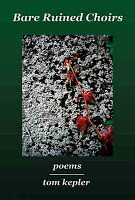 (This article was first published as a guest-post on Australian writer Rosanne Dingli's blog. Thanks to Rosanne for asking me to write an article. It gave me the opportunity to consider how I approach the process of writing.)
(This article was first published as a guest-post on Australian writer Rosanne Dingli's blog. Thanks to Rosanne for asking me to write an article. It gave me the opportunity to consider how I approach the process of writing.) * * *
We'll start not with "poetry" but with "poetic" to lessen the clicking sound of readers mousing to another website.
"How poetic of you!" and "How poetic!" are common enough sayings, and what those expressions mean is pretty clear to everyone: poetry extending into prose, words used with greater intensity, more meaning packed into fewer words.
So what about when the storytelling of prose wriggles its way into a poem? We have three possibilities:
epic poetry (Hello, John Milton and the Beowulf poet)prose poetry (Hello, Walt Whitman, father of the long line)poems as a series (Hello, Shakespeare's sonnets to the Dark Lady)Writing poems in a series is a fascinating opportunity for a writer. A poet can create windows of perception--poems one by one--and then link them.
Modern technology gives us the "slideshow" effect as an example. Each photo is its own reality, yet together the images conjure a greater effect. The whole is greater than the sum of the parts.
The same is true with a series of poems. They can be crafted, each with its own beauty, yet can also be compiled and organized to tell a story. Like flash fiction, poems can be short, impressionistic vignettes that "hint" at a larger story.
If novels are like the cinema, a series of moving pictures, then modern lyric poetry is the individual photograph, each viewed one by one. What is the functional difference of experiencing these two modes of storytelling?
In a movie, the audience is stationary and experiences images as they move. This is true also in a novel; the action occurs on the page to the characters. When a sequence of poems tells a story, the poems are like still images mounted on a wall. It is the viewer or reader that moves from reality to reality--transformed by words that are "possessed of more than usual organic sensibility," to quote William Wordsworth.
My book of poetry, Bare Ruined Choirs, consists of twenty-eight poems that document the life of a relationship. Six years after the last, fading years of my first wife's life, I realized I had the makings of a story, a chronicle with a beginning, middle, and end.
The organization of the poems, though, is conceptual, rather than chronological to the order of their writing. The artistic, universal story supercedes the biographical--or perhaps the two blend together to the universal story of "love, life, and death."
If passages in novels can be poetic prose, then certainly a series of poems can be designed to tell a story. That's what I tried to do with Bare Ruined Choirs, anyway--to tell a universal story and to structure a tribute to a brave and tragic lady.
Copyright 2011 by Thomas L. Kepler, all rights reserved
Published on September 17, 2011 09:00
September 15, 2011
David Lynch on the TM-Quiet Time Program
As a teacher who teaches in a school that promotes Consciousness-Based education, where all the students and faculty practice the Transcendental Meditation program, I see daily what the research on TM has validated--that practicing this "stress-busting" technique provides the opportunity for young adults to experience "kinder, gentler" teen years.
In the video below, David Lynch talks about young people,meditation, and why he created the David Lynch Foundation. I found David's sincerity and passion engaging, and wanted to share the video with you.

In the video below, David Lynch talks about young people,meditation, and why he created the David Lynch Foundation. I found David's sincerity and passion engaging, and wanted to share the video with you.
Published on September 15, 2011 09:00
September 13, 2011
Discarded "Literary America": a chronicle of American writers
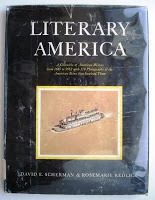 So I'm given this library book. I flip it open to the copyright page and see it was published the year of my birth--and has now been discarded by my school's library. There's a weird moment.
So I'm given this library book. I flip it open to the copyright page and see it was published the year of my birth--and has now been discarded by my school's library. There's a weird moment.Literary America, it's called, and the front cover sub-text states: "A chronicle of American writers from 1607 to 1952 with 170 photographs of the American scene that inspired them"--compiled and written by David E. Scherman and Rosemarie Redlich (Redlich is a "redhaired Viennese" and Scherman a New Yorker, both of whom had worked for Life magazine).
Famous American writers: Captain John Smith, Benjamin Franklin, Thomas Jefferson, Washington Irving . . . Cooper, Thoreau, Emerson, Twain, Whitman, Melville--on to more modern writers: Jack London, Willa Cather, T.S. Eliot, Carl Sandburg . . . Fitzgerald, Faulkner, Hemingway, Steinbeck, Richard Wright.
But here are some other American writers of the 93 chosen in 1952 as significant: Artemus Ward, Lafeadio Heran, Hamlin Garland, Winston Churchill (not the Brit P.M.), Ellen Glasgow, John P. Marquand.
Either my education was shabby and my reading habits spotty, or a "contemporary" vision of who is going to pen the classics is a chancy affair. I admit there are holes in the fabric of my education, but I suspect the time-tested process of letting time winnow out the classics is best.
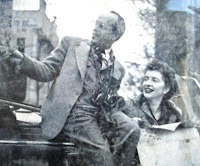 Of the 93 authors, I had never heard of sixteen. Perhaps when I read the sketches of the writers' lives, some spark of connection will fire--a book title, an event, a genre.
Of the 93 authors, I had never heard of sixteen. Perhaps when I read the sketches of the writers' lives, some spark of connection will fire--a book title, an event, a genre.I intend to research and read more deeply. This is my chance to fill a few neglected corners of my education. Perhaps public domain ebooks through Project Gutenberg will yield unexpected treasures.
A tidbit chosen at random from the "unknowns": Frank Norris "is now generally credited" with bringing naturalism to the American writing scene. I have heard of his novel The Octopus, but to be honest, I thought it was one of Upton Sinclair's novels, along with Sinclair's muckraker The Jungle. Norris died at thirty-two years of age, his trilogy of "man in a struggle with social forces" only two thirds completed.
Learn something every day . . .
 I might be coming back to this 1952 "chronicle of American writers" to learn a little more literary history and to ponder more on our assumptions of literary greatness.
I might be coming back to this 1952 "chronicle of American writers" to learn a little more literary history and to ponder more on our assumptions of literary greatness.I've made some personal connection with this book published the year of my birth. I think I'll keep it out of the "discard" pile a little longer.
Copyright 2011 by Thomas L. Kepler, all rights reserved
Published on September 13, 2011 09:00
September 10, 2011
Evaluating Independently Published Books: a Rubric
Some fellow writers and I discussed the idea of promoting on our blogs great books to read by independently published authors.
<A HREF="http://ws.amazon.com/widgets/q?Servic... Widgets</A>
I am all for that idea: a way of sorting out the excellent reads from those books that are unfinished-yet-still-published books--books still needing revision or editing to truly shine.
If I am going to evaluate and promote independently produced books (indie books) on my webpage, it seems only reasonable to explain my process of evaluation.
Before I get into specifics, I should mention that a book needing proofreading will not receive a higher rating than three stars. Many errors in following the conventions of writing intrudes on the reader's appreciation of the book and should not receive higher than an "OK" rating. It may even receive a lower rating.
This is important for me as a teacher: if I am encouraging students to "learn the ropes," how can I rate a book as "quality" if it ignores the conventions of writing for no good reason? It would be inconsistent with my teaching goals of training my students to be competent, skilled writers.
***** (5 Stars): Mastery of vision, style, and execution. (To Kill a Mockingbird)
**** (4 Stars): Quality, professional excellence. A memorable book.
*** (3 Stars): Readable, perhaps enjoyable, but ultimately just "OK."
** (2 Stars): Significant weaknesses mar the book and interfere with reading.
* (1 star): If you finished it, you deserve the royalties.
I don't usually employ stars when writing reviews for this blog. I prefer to just write a meaningful reaction to the book--to "use my words." However, Smashwords, Amazon, Goodreads, and other book sites employ this method, so I've included a scale.
All books listed as "Great Indie Reads" will have received either four or five stars. I know that all books aren't as powerful and compelling as To Kill a Mockingbird or Of Mice and Men, but the books I identify as "Great Indie Books" will be ones that, in my opinion, express the highest standards of our language and encourage us to think and evolve.
(Note: I receive no payment for books reviewed, although I may receive a free book or ebook.)
Copyright 2011 by Thomas L. Kepler, all rights reserved
<A HREF="http://ws.amazon.com/widgets/q?Servic... Widgets</A>
I am all for that idea: a way of sorting out the excellent reads from those books that are unfinished-yet-still-published books--books still needing revision or editing to truly shine.
If I am going to evaluate and promote independently produced books (indie books) on my webpage, it seems only reasonable to explain my process of evaluation.
Before I get into specifics, I should mention that a book needing proofreading will not receive a higher rating than three stars. Many errors in following the conventions of writing intrudes on the reader's appreciation of the book and should not receive higher than an "OK" rating. It may even receive a lower rating.
This is important for me as a teacher: if I am encouraging students to "learn the ropes," how can I rate a book as "quality" if it ignores the conventions of writing for no good reason? It would be inconsistent with my teaching goals of training my students to be competent, skilled writers.
***** (5 Stars): Mastery of vision, style, and execution. (To Kill a Mockingbird)
**** (4 Stars): Quality, professional excellence. A memorable book.
*** (3 Stars): Readable, perhaps enjoyable, but ultimately just "OK."
** (2 Stars): Significant weaknesses mar the book and interfere with reading.
* (1 star): If you finished it, you deserve the royalties.
I don't usually employ stars when writing reviews for this blog. I prefer to just write a meaningful reaction to the book--to "use my words." However, Smashwords, Amazon, Goodreads, and other book sites employ this method, so I've included a scale.
All books listed as "Great Indie Reads" will have received either four or five stars. I know that all books aren't as powerful and compelling as To Kill a Mockingbird or Of Mice and Men, but the books I identify as "Great Indie Books" will be ones that, in my opinion, express the highest standards of our language and encourage us to think and evolve.
(Note: I receive no payment for books reviewed, although I may receive a free book or ebook.)
Copyright 2011 by Thomas L. Kepler, all rights reserved
Published on September 10, 2011 04:00
September 6, 2011
Cedar Valley Nature Trail: a bicycle day-trip photo journal
 Iowa's Cedar Valley Nature Trail is a 52-mile rails-to-trails bike and hiking path that links the urban areas of Cedar Rapids to Waterloo. On Labor Day weekend, 2011, my wife and I decided to explore the trail by car and bike.
Iowa's Cedar Valley Nature Trail is a 52-mile rails-to-trails bike and hiking path that links the urban areas of Cedar Rapids to Waterloo. On Labor Day weekend, 2011, my wife and I decided to explore the trail by car and bike.Our exploration only extended as far north on the route as La Porte City.
The southern trailhead is in Hiawatha, a suburb of Cedar Rapids. Take Interstate 380 Exit 25 (Boyson Road). We found it well-posted with signs and easy to locate from Interstate 380.
This trailhead is well-developed and well-used, obviously a popular route for bicyclists and joggers.
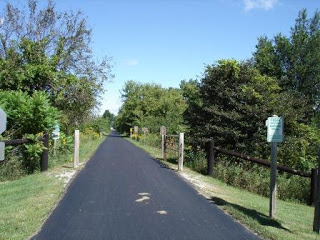

One brochure indicated that there was a campsite in Lafayette, a few miles northeast of Hiawatha and on the trail, so we returned to 380 to link with a connecting road; however, the roads overpassing the freeway did not have access to the freeway, so Lafayette is still a mystery.
Center Point was our next stop, being one of the larger towns on the bike path's route. We found the town typical of many other small Iowa towns--several lawnmowers and weed-wackers busy and an otherwise quiet atmosphere. The train station museum was well-maintained and clean.
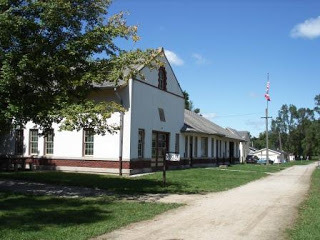
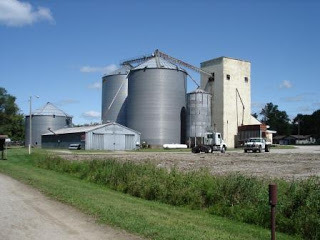
The two photos above are left/right views from the trail. the CVNT runs a narrow corridor of quiet, car-free biking through the usual business of Iowa--homes and commercial farming.
Having eaten a good lunch on the picnic tables provided by the Center Point train station museum, we decided to travel on to La Porte City to see McFarlane Park campgrounds and to ride the trail there. We were tired of car exploration. Take Exit 49 from 380. That is Highway D48, which will take you to La Porte City after about 10 miles of country driving.
La Porte City is a well-maintained town, and riding the trail was easy because the surface was asphalt. We had a pleasant ride up and down the trail for 90 minutes, about 8-9 miles. Below are some photos of the ride.
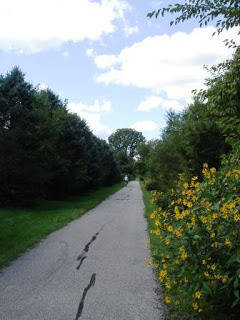
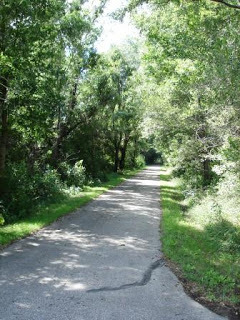

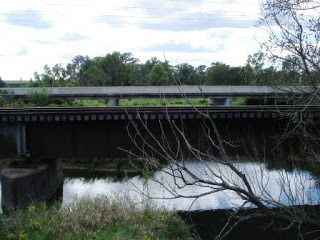
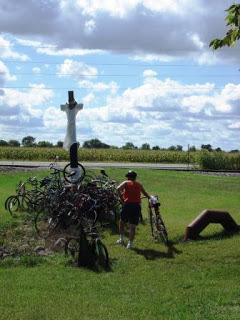
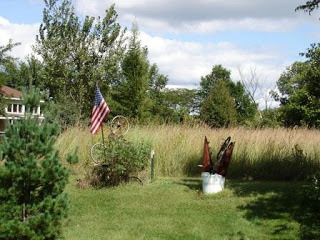
As you can see from the shot of the slough, the trail runs a narrow corridor of beauty and habitat preservation: natural scenes to one side, and highway and railroad on the other. It was also clear from the green-scummed water in low areas that there is a high amount of farm-chemical run-off. However, keeping one's eyes on the narrow tunnel of the nature trail, there was a lot of beauty to see.
We finished by checking out McFarlane Park, just outside of La Porte City. Since it was Labor Day weekend and a few days of cool weather and low humidity, the campground was packed. It is a beautiful space, though, and we walked to the boat ramp to see the river.
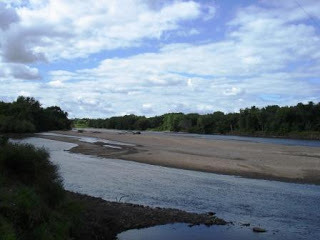
 The blue line across the "triangle" of the roof peak is how high the floodwaters reached in 2008. This building is part of the campground maintenance area.
The blue line across the "triangle" of the roof peak is how high the floodwaters reached in 2008. This building is part of the campground maintenance area.Brochures are available through the local county conservation board.
Linn CountyConservation
Linn County Trails Association
Black Hawk County Conservation Board
Cedar Falls Tourism and Visitors Bureau
Final Thoughts:
The Cedar Valley Nature Trail is well-maintained and used by many people. A bridge is out just south of McFarlane Park that will probably be replaced by the end of the construction season, 2013, as I was informed by the park commission that funding was in the future.
The lure of the trail for my wife and me was to one day ride its entire length, easily enjoying ourselves and experiencing traveling for a distance and a time while living from what we pack on our bikes.
For day trips, our town of Fairfield, Iowa, has a developed network of bike trails that we can ride all day and not have to travel a couple of hours prior hitting the pedals. We prefer that. Although we enjoyed the exploring and getting away, what we really discovered is that the environment of the Cedar Valley Nature Trail is not really different from what's around where we live.
Until the CVNT replaces its bridges so that the entire length of the trail can be easily explored on a multi-day trip, even though the grass is green on the trails between Cedar Rapids and Waterloo, they are no greener than beside the trails around our town a couple of hours away.
Copyright 2011 by Thomas L. Kepler, all rights reserved
Published on September 06, 2011 16:45
September 3, 2011
Expand Your Vocabulary: an easy, effective approach
 Choice is good.
Choice is good.Choosing the words you want to learn is more effective than having someone else choose them for you.
Choice provides motivation.
Choice increases meaningfulness.
Choice can even be provided with required, necessary vocabulary; for instance, twenty words can be provided, of which twelve are chosen.
Here are the procedures I use at school for my individualized reading program.
I give each student a book mark, a 3x5 index card cut in half by its length.
Students, as they read, write down words they don't know (or wish to know better) on the card, including the page number.
Later, they look the word up.
I have them provide the following information on a 3x5: word, appropriate definition, sentence from book (may be shortened), word used in their own sentence. This allows me to provide feedback.
What if the book is easy and the reader finds no words?
For the classroom, a student just offered a great solution yesterday: go to one of our recently-read stories we shared in class. Yesterday it was an excerpt from Frederick Douglass's My Bondage and My Freedom. The students felt this was a much better idea than using a vocabulary-builder textbook, where the words and exercises are all provided by the book.
Also, this is a great opportunity to suggest a more challenging book for the reader.
This method isn't new. I've used it for so long I've forgotten its source. Established, effective teaching practices should be shared, though, not hoarded.
Try it: you might find it efficacious.
Copyright 2011 by Thomas L. Kepler, all rights reserved
Published on September 03, 2011 09:00
August 31, 2011
Evolution of a Book Cover
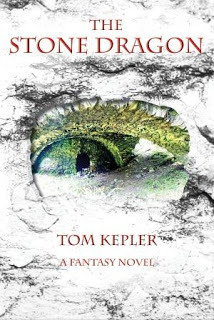
Here is the cover for my novel The Stone Dragon.
I'd like to share its evolution with you--one that was a step-by-step progression, aided by friends and online suggestions.
The first version of the novel's cover was composed on a Word document, using a borrowed photo from the web. It was a personal-use visual for me as I revised the novel. The background was a plain white, the image was that of the "dragon" above but as a plain rectangular photo, and the font was Papyrus. It did the job--I looked, revised, and planned.
Then I decided to get serious and contacted the photographer, French photographer Suzanne Bonneford, and boldly asked for permission to use the image for my book cover. Permission was granted for two photos, the original jpgs were emailed to me, and I was in business!
Working with PhotoShop with my first novel, Love Ya Like a Sister , taught me quite a bit about the process. Once the book block text was fairly complete, I then sent to Lightning Source for my cover template. This allowed me to start laying out my cover, the template lines providing size boundaries.
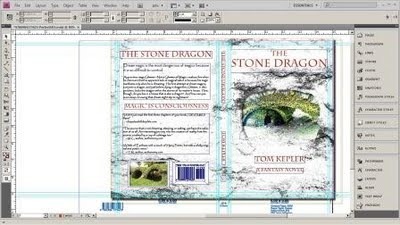
The template came with all the margins that structured the correct placement of the front, back, and spine of the book. It also determined "safe" spaces for edges for slight shifts of the cover when it was printed.
The cover background was still white, and with a comment from my wife, I realized that a stone background would be good. With that idea, I biked to a local stone retaining wall and looked at individual stones and their patterns until I found one that I liked. I took the pic and came how with it.
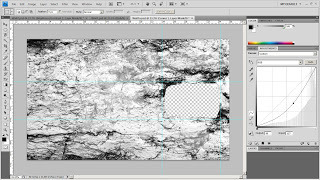
Playing with contrast with PhotoShop soon gave me the basic background. Then I had to learn how to cut the hole in the background for the "dragon" to peek through. This was both fun and tedious--making the hole the right size and following the grain of the stone to make the hole look more natural.
The next big break-through was giving the wall a "drop shadow" effect. This provided a lip to the hole and made it look more three-dimensional.
Comments from online groups prompted me to change the font to "Charlemagne," a bolder and more chiseled font.
Finally, my tech friend helped me lighten and strengthen the colors of the "dragon's eye" so that it would dominate the cover and not be washed out and lack strength in relation to the wall and type.
That is the process. Time was an essential element--time for me to grow in my skills as to what was possible, and time to live with the various versions and to then see more options.
Designing a book is very different than writing a story. Both creative processes are challenging and fulfilling. Becoming a publisher has been a real growing experience for me. And, as a bonus, I'm already finding ways to incorporate my new knowledge into my teaching.
The Stone Dragon will be available sometime in October.
Copyright 2011, by Thomas L. Kepler, all rights reserved
Published on August 31, 2011 04:28
August 26, 2011
Book Review: Making a Name and Other Stories, by Rosanne Dingli
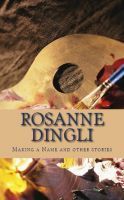 There's a certain magic when a writer masters the short story form--as if one can see the cosmos in a cup of tea.
There's a certain magic when a writer masters the short story form--as if one can see the cosmos in a cup of tea.That was my experience as I read Australian writer Rosanne Dingli's Making a Name and Other Stories , that of seeing the world through the sharply defined circumference of a cupful of words.
The stories, set in Europe and Australia, often revolve around the artistic world. Painting, writing, and music either form the focus or enrich the texture of the stories. One enters the world of the characters and is almost hesitant to continue, as if intruding on the privacy and intimacy that is revealed, whether the setting is an artist's flat in France or an isolated farming station in Australia.
It may be that "At Dirrunbirdum station, everything was much the same as usual" in "Rainstorms," or that "What surprised me most of all was the dust" in the story "Dust Gathered in an Afternoon," or it may even be that "Portia is sitting in the garden because she doesn't like the smell of frying onions and we are having a quarrel," but in every case, there is a mystery, an individual secret that leads and entices, leads to the next paragraph.
The characters seem exotic, even when they are ordinary. This is due to Rosanne Dingli's ability to describe the individual uniqueness of the characters, their personal dignity and exotic extravagances. There is a revealing of personal triumphs and tragedies in these stories, of a mother who, "When she went, it was more a shock that she carried out her threat than a surprise," of Natalie, who finds a bottle: "But it was a strange one. Green glass, narrow neck, bulbous body. Very dirty. I wasn't interested," but then finds "Tiny writing on the inside of the bottle." These stories provide the reader the opportunity to find the extraordinary in the ordinary, the cosmos in the tea cup.
One short story, "The Submarine," provides insight into the experience of reading these stories. As we read, we are like the characters in the story who "examine the shimmering shield, the skin of the environment they know so much about now. Although they cannot see it from the dinghy, they can sense all the action, the life and death drama taking place below them."
Rosanne Dingli, in Making a Name and Other Stories, provides us with a portal, a perspective, that engages us in lives and loves that we have not quite seen that particular way before. Perhaps we will find out what the travelers in the submarine realize: "They have no real destination, of course. That is the whole point of the book, and the reader discovers this about halfway through."

Making a Name and Other Stories
Copyright 2011 by Thomas L. Kepler, all rights reserved
Published on August 26, 2011 03:25
August 22, 2011
Maharishi School Begins for a Safe School Year
 What is the main thing that parents ask schools provide for children?
What is the main thing that parents ask schools provide for children?Academic knowledge?
Excellent, well-rounded programs?
Both inner and outer development?
As a Consciousness-Based Education school, Maharishi School begins with an edge regarding safety by practicing the Transcendental Meditation technique, which lowers stress, increases harmonious relationships, and improves health, as scientific research indicates.
This "from inside to outside" program provides an underlying stability for the school, but it is not enough. Every school needs a plan or procedures for what to do if an emergency arises. Whether the emergency be one from nature or from an individual, schools have to be prepared.
Imagine a fire burning out of control across a river. The water is a huge protective barrier, protecting the land and people from the fire across the way. But a possibility exists, even if slight, that a spark might make its way across the water. A wise town would prepare a plan for such a situation, even if the chance were only slight.
 Schools throughout the U.S. are reviewing policies and procedures at this time in order to ensure that in the event of an extreme situation, all are prepared to keep children safe.
Schools throughout the U.S. are reviewing policies and procedures at this time in order to ensure that in the event of an extreme situation, all are prepared to keep children safe. Maharishi School is no different. Last week it reviewed with its staff its emergency plan--what to do in various situations. Entering my 33rd year of teaching, I am proud of the professionalism of the school in its development and initiation of emergency procedures.
We can never plan for each and every possibility. The possibilities are just too many, too complex--we could even say unfathomable. However, we can do our best to make sensible arrangements in advance that can be initiated in unusual circumstances.
"Safety first."
"Be prepared."
"An ounce of prevention is worth a pound of cure."
"Well begun is half done."
Safety is important for learning. How can we learn if we are worried about something? Fear closes doors instead of opening them. I'm glad that my school is behind school safety 200%--safety from inside out and from outside in.
I wish all students and all schools a safe and successful school year.
Copyright 2011 by Thomas L. Kepler, all rights reserved
Published on August 22, 2011 07:51



